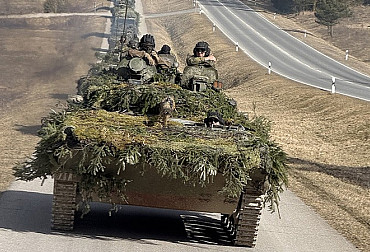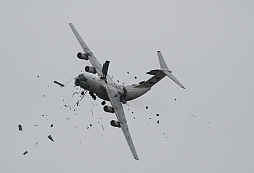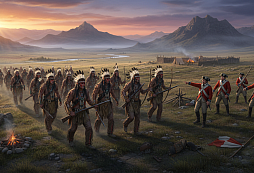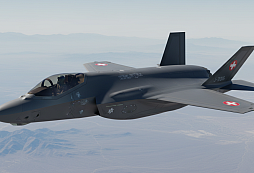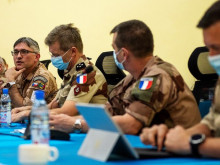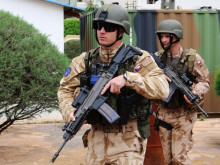MAD21: new camouflage pattern for the Czech Armed Forces will ensure effective concealment in the open air and in urban conditions
After more than a quarter of a century, our soldiers should receive a new camouflage pattern called MAD21 (Camouflage Design Pattern 2021), which, unlike the current camouflage pattern of the Czech Armed Forces (Pattern 95), should provide effective cover not only anywhere in the countryside, but also in urban conditions thanks to multi-purpose printing. In addition to the new camouflage pattern, a new cut and material is also envisaged, so that our soldiers should receive completely new camouflage, which will be presented to the Chief of General Staff, Gen. Opata in May this year. However, the actual process of introducing the new camouflage to the Army will take some time.
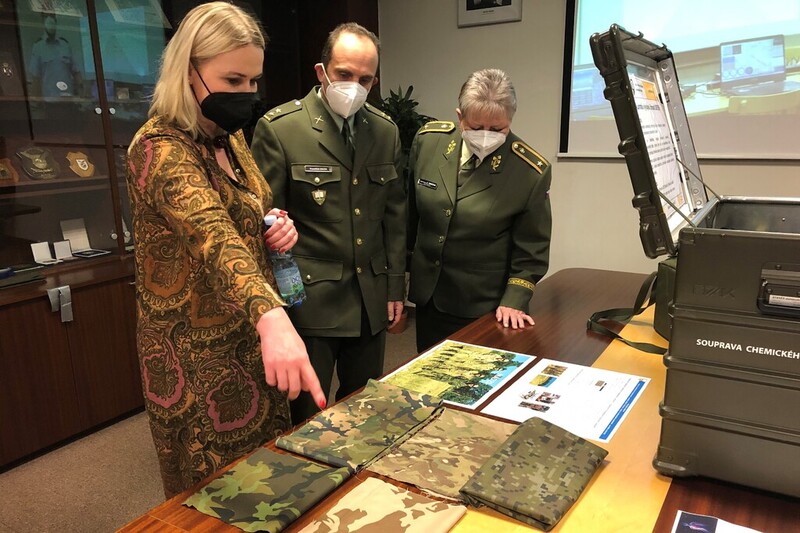 Picture: Minister of Defence Jana Černochová getting acquainted with the new MAD21 camouflage pattern during her visit to the University of Defence in Brno in January | Ministry of Defence of the Czech Republic
Picture: Minister of Defence Jana Černochová getting acquainted with the new MAD21 camouflage pattern during her visit to the University of Defence in Brno in January | Ministry of Defence of the Czech Republic
Over the last five years, the need for new camouflage has been discussed several times in public and among experts. Not only because the Czech Army has been serving in the same camouflage print for a quarter of a century and other Alliance member states have managed to change several times. The change of design and colours is necessary mainly because of the change of environment of our current and future battlefield. The Czech Army has had its "forest print", the 95 camouflage pattern, for a long time because it is of high quality and attempts to replace it have not met expectations, especially the cover requirements. But now the MAD21 project, i.e. "Camouflage Design Pattern 2021", is trying to surpass it and has met all the requirements for modern and, above all, functional camouflage.
"The MAD21 project came about by chance at a regular meeting of the Standing Integrated Working Team (SIPT 2) at the Material Security Centre of the Brigade Services in Brno," comments Col. Ladislav Bujárek, the head of the MAD21 project and chairman of the user trials in one. "I got my hands on the book 'Camouflage: Chapters from the History of Land and Naval Camouflage Design' by academic sculptor Tomáš Chorý, Art.D. It was a chapter on MultiCam and its derivatives, where the author compares camouflage patterns used by the U.S. military since 2010 and variations of camouflage patterns based on MultiCam technology. These are OEF-OP (Multicam), OCP (Scorpion W2), British MTP and Australian AMC. Basically, it was a dispute between two members of the team involved in the development of the NOMAD II project, which was the successor to NOMAD I. The subject of the dispute was the colour itself, or the possibility of having the colour under patent," explains Colonel Bujárek.
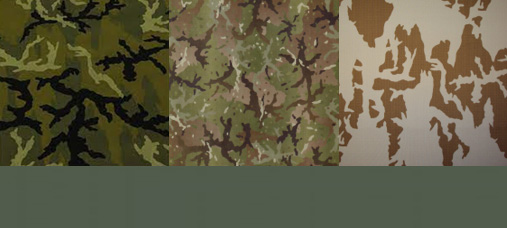
Picture: Comparison: forest pattern 95, MAD21, desert pattern 95 and the lower stripe representing URBAN GREEN for ECWCS and insulation components | Ministry of Defence of the Czech Republic
The dispute was eventually decided by the author of the book himself. The Brno team eventually approached Mr Chorý. The graphic designer and teacher at Palacký University turned out to be a long-time military fan and, as the "arbitrator" of the dispute, explained certain colour parameters to the soldiers. "The word was given and Mr. Chorý prepared a possible design for our team for future printing. It took him an incredible fourteen days," says Bujárek. "Since I was a child, I was into the army, I used to assemble airplane models and what I enjoyed most about them was their camouflage," explains the assistant professor and head of the graphic design studio at the UP Department of Art Education. He received a grant from his alma mater for the book. "Combining art and camouflage is not unusual. Each camouflage has its own logic. The American painter and naturalist Abbott Thayer is often referred to as its father. He designed, for example, "invisible" camouflage for ships and experimented with camouflage clothing. The well-known German painter Paul Kleev camouflaged aircraft during World War I." Mr Chorý explains his enthusiasm.
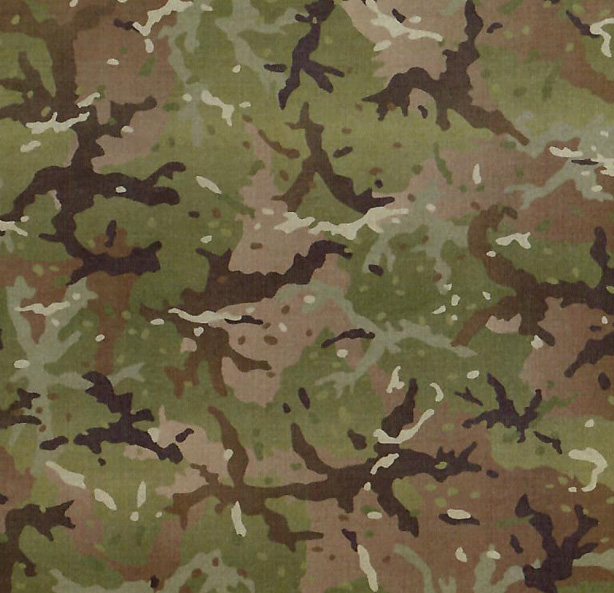
Picture: Detail of MAD21 camouflage pattern | Ministry of Defence
The task was a multi-purpose print that would preserve the traditions of the current Czech Army’s Forest camouflage pattern (M. 95), which is great for the forest. But unfortunately, when the landscape is more "complicated", the camouflage starts to lose its covering ability. Not to mention urban development in general. "Thus, modify the existing Czech Army forest pattern using colors based on MultiCam camouflage prints and modify it for different anticipated environments so that in the future we use only one print instead of two. That is, forest and desert," explains Lieutenant Colonel Helena Jarešová, Chief of the Czech Armed Forces Equipment Service. Thus, in addition to the need to adapt to the new environment, there was also a requirement to eliminate the need to change clothes in the event of a change of battlefield environment, for example from forest to rural.
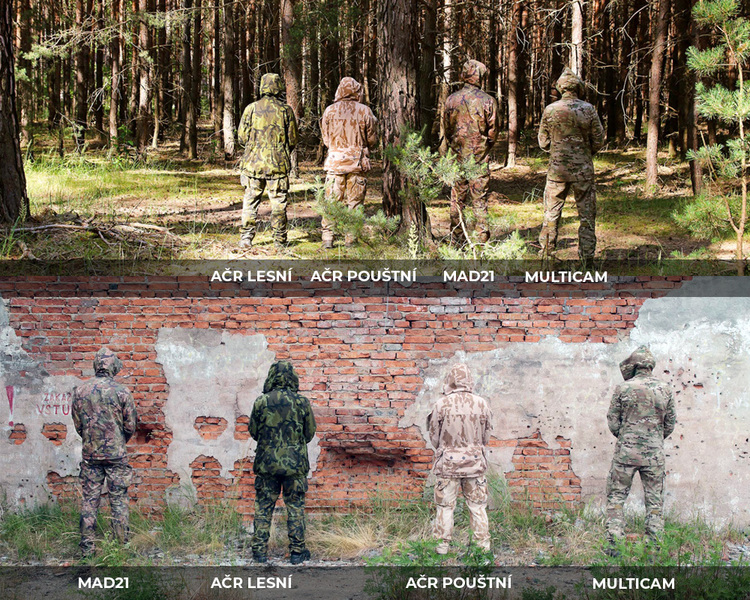 Picture: The brief was for a multi-purpose print that would preserve the traditions of the current Army Forest camouflage pattern (M. 95), which is great for the woods. But unfortunately, when the landscape is more "complicated", the camouflage starts to lose its covering ability. Not to mention urban development. | Ministry of Defence of the Czech Republic
Picture: The brief was for a multi-purpose print that would preserve the traditions of the current Army Forest camouflage pattern (M. 95), which is great for the woods. But unfortunately, when the landscape is more "complicated", the camouflage starts to lose its covering ability. Not to mention urban development. | Ministry of Defence of the Czech Republic
MAD21 is not the first such project. The first project to develop the new multi-purpose design NOMAD I (New MAsking Design I) was entrusted to the Military Research Institute Brno in 2015-2017. The project specification was then commissioned by the Force Development Section of the MoD. However, in the end, the project only confirmed the qualities of the current 95 pattern and the proposed output did not meet the requirements that were specified. The new task of the Chief of the General Staff of the Czech Army, Army General Aleš Opata, was clear - "again and better." The imagined final product was quite different from the required output. General Opata wanted the soldiers themselves, who would use the camouflage, to participate in the project alongside professional specialists. He wanted to further combine their knowledge and practical experience gained from foreign operations. The project was given the simple name NOMAD II and this time the logistics section of the Ministry of Defence became the project manager. So the specification of the defence research project started to be prepared by the users themselves, members of the SIPT 2 team. There also occurred that dispute between two members and the emergence of the successful MAD21 project. After the actual presentation of the camouflage design by the author, in the month of April 2021 the BDU project was presented to the Chief of the General Staff of the Army with a request for permission for the project to be implemented under the auspices of the University of Defence. After the Rector of the University agreed, the project was set in motion. While the Army, through the logistics section, defined its specification, the university handled the management of the project. It has sorted out the protection of Mr. Chory's intellectual property, which he has transferred to the Army. The project is composed of two parts - printing, i.e. MAD21, and then cutting and material. In November 2021, this camouflage design was approved by the Ministry of Defence and registered as a European industrial design. The entire approval procedure was carried out by the University of Brno.
Several components were involved in the project. Twenty people in total, from soldiers and civilian employees who are directly involved in the equipment to its users. Another forty soldiers from BDU are testing and will test for a while. The aforementioned defence and Palacký universities and other members of the integrated working team are also still working on the project. In addition to Colonel Bujárek and Lieutenant Colonel Jarešová, it is mainly Ludmila Sedláková who bears the brunt of the project with the author of the proposal. She is responsible for the design and material solution of the new camouflage. Lieutenant Colonel Jarešová and Colonel Daniel Synk, Deputy Head of the Logistics Section, were responsible for the administration of the project. No less important in the team is Lt. D. from the 22nd Helicopter Air Base. He also brought the designer Tomáš Chorý to the team and was a persistent opponent of the arguments.
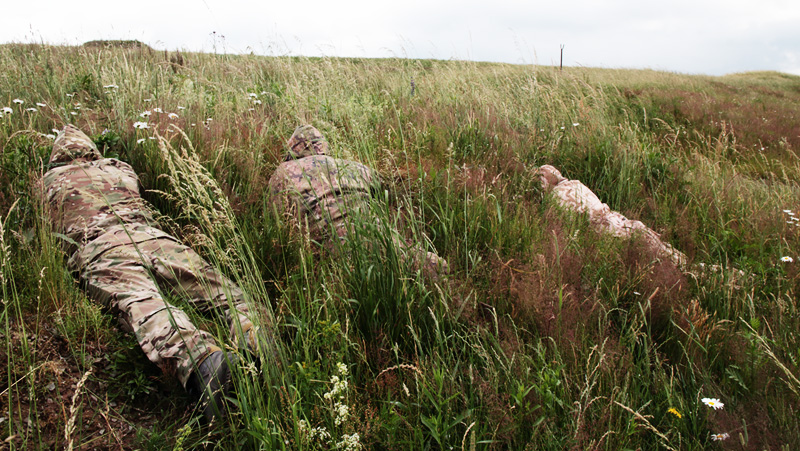 Picture: Comparison of camouflage patterns (Multicam, MAD21, desert pattern 95) | Ministry of Defence of the Czech Republic
Picture: Comparison of camouflage patterns (Multicam, MAD21, desert pattern 95) | Ministry of Defence of the Czech Republic
Currently, the University of Defence is working on evaluating the versatility of MAD21 by exact descriptions and is preparing a new methodology for measuring colour and spectral reflectance in cooperation with the Technical University of Liberec. The Military Research Institute Brno, which has the status of national guarantor of camouflage, is of course also invited to the project, so that the whole process will be concluded with the publication of a new Czech Defence Standard. Overall, this project wants to avoid the mistakes that occurred in the NOMAD I project, whose output was not as expected. We do not want to repeat the mistakes we have already made. Most emphasis is currently placed on colleagues in the Department of Munitions - K 201, whose main task is to describe the universality in an exact way. The leader in this field is Associate Professor Balaz. MAD21 is not the only project of the Army and the University of Defence. Another project that the Logistics Section is working on is the standardization of ballistic protection for the individual. This and other projects are based on the already approved equipment upgrade plan, including the modification of badges, ranks and national emblems and symbols in cooperation with VHI Prague. The upgrade plan itself is based on prioritization according to the Chief of General Staff's assignment, with the main driver being the adjustment of the soldier's equipment system in the field, and the entire SIPT 2 project is subordinated to this. The aim is to be the legislative owner of the design solutions of the newly developed components, to have free access to new printing and colours, and at the same time, with the creation of standards for the Material Security Centre of the rear services in Brno and the Office for Defence Standardisation, Cataloguing and State Quality Verification of the Ministry of Defence, to have a basis for subsequent quality control. The idea is to ensure that the know-how that is invested in various projects remains in the hands of the Ministry of Defence and can be built upon in the future. The BDU MAD21 project, i.e. camouflage in a new cut and print, will be presented to General Opata in May this year.
We asked the General Staff of the Army some questions about the new MAD21 camouflage pattern:
Who all was involved in the development of MAD21 and how did this development proceed from the initial designs to the final implementation?
Members of the Logistics - Equipment Services Section, the University of Defence, Palacký University (designer Tomáš Chorý), 22nd Helicopter Air Base and last but not least members of the Military Research Institute sp. A total of about 20 people are involved in testing and commenting and another 40 people from various units of the Czech Armed Forces.
When will our soldiers see the first uniforms in this new pattern?
We cannot define yet, we are at the beginning of the process. So far we have the printing, next up is the approval of the cut, fabric material and colours.
Apart from the camouflage pattern, the material and cut of the uniforms should also undergo some changes. What specific changes or innovations can our soldiers look forward to?
As we are still developing the cut and material, we will not specify.
There are many Czech and foreign companies that produce clothing and equipment in the Pattern 95 camouflage pattern. Will the same procedure be possible for the new MAD21 pattern or will this be limited by the industrial design?
So far, the Czech Army owns the European industrial design for the MAD21 print, and we want the same to be true for the cut and material.
















